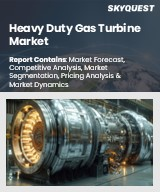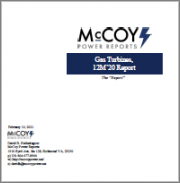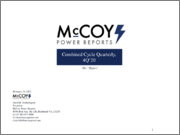
|
시장보고서
상품코드
1841669
월풀 터빈 시장 : 세계 산업 규모, 점유율, 동향, 기회, 예측 - 유형별, 용량별, 최종사용자별, 지역별, 경쟁별(2020-2030년)Whirlpool Turbine Market - Global Industry Size, Share, Trends, Opportunity, and Forecast, Segmented By Type, By Capacity, By End-User, By Region & Competition, 2020-2030F |
||||||
세계의 월풀 터빈 시장은 2024년에 1억 2,176만 달러로 평가되었으며, 예측 기간 동안 CAGR은 8.76%로, 2030년까지 2억 333만 달러에 달할 것으로 예측됩니다.
| 시장 개요 | |
|---|---|
| 예측 기간 | 2026-2030년 |
| 시장 규모 : 2024년 | 1억 2,176만 달러 |
| 시장 규모 : 2030년 | 2억 333만 달러 |
| CAGR : 2025-2030년 | 8.76% |
| 급성장 부문 | 10-50킬로와트 |
| 최대 시장 | 아시아태평양 |
월풀 터빈 시장이란 강, 운하, 하천 등의 유수의 운동에너지를 이용하여 제어된 소용돌이를 발생시켜 터빈을 구동하여 발전하는 소규모 수력발전 기술 분야를 말합니다. 이 터빈은 대규모 댐을 필요로 하지 않고, 생태계를 크게 파괴하지 않고, 저수두 환경에서 효율적으로 작동하도록 설계되었습니다. 이 시장은 특히 전통적인 전력망 인프라가 없거나 신뢰할 수 없는 오지와 농촌 지역에서 분산형 지속가능한 에너지 솔루션에 대한 전 세계적인 수요 증가로 인해 강력한 성장세를 보이고 있습니다.
월풀 터빈은 비용 효율적이고 친환경적인 대안으로 수생 생태계에 미치는 영향을 최소화하면서 지속적이고 유지보수가 적은 전력을 공급할 수 있습니다. 재생에너지 목표가 강조되고 이산화탄소 배출량 감축을 위한 전 세계적인 변화로 인해 소규모 수력발전 기술에 대한 관심이 더욱 높아지고 있습니다. 정부 및 지방정부는 지원적인 규제 프레임워크, 재정적 인센티브, 농촌 전기화 계획에의 편입 등을 통해 도입을 장려하고 있습니다. 터빈 설계의 혁신, 원격 모니터링 시스템, 모듈식 구조 등 효율 향상, 설치 간소화, 운영 비용 절감을 실현하는 기술 발전도 중요한 역할을 하고 있습니다.
또한, 하이브리드 재생에너지 시스템 및 스마트 그리드와의 통합이 가능한 소용돌이 터빈은 시장의 가능성을 더욱 높이고 있습니다. 물고기 친화적인 운전과 대규모 저수지의 폐지와 같은 환경적 이점도 있어 생태학적으로 민감한 지역에서는 특히 매력적인 솔루션이 되고 있습니다. 아시아태평양은 풍부한 수자원, 산악지대, 재생에너지 도입을 지원하는 정부의 강력한 이니셔티브에 힘입어 이 시장에서 압도적인 힘을 발휘하고 있습니다.
주요 시장 촉진요인
재생에너지원에 대한 전 세계적인 수요 증가
주요 시장 과제
높은 초기 자본 지출과 재무적 위험
주요 시장 동향
하이브리드 재생에너지 시스템과의 통합
목차
제1장 서비스 개요
- 시장 정의
- 시장 범위
- 대상 시장
- 조사 대상 연도
- 주요 시장 세분화
제2장 조사 방법
제3장 주요 요약
제4장 고객의 소리
제5장 세계의 월풀 터빈 시장 전망
- 시장 규모 및 예측
- 금액별
- 시장 점유율과 예측
- 유형별(수평축 월풀 터빈, 수직축 월풀 터빈)
- 용량별(10킬로와트 이하, 10-50킬로와트, 50킬로와트 이상)
- 최종사용자별(주택, 상업, 산업, 농촌 지역)
- 지역별(북미, 유럽, 남미, 중동 및 아프리카, 아시아태평양)
- 기업별(2024년)
- 시장 맵
제6장 북미의 월풀 터빈 시장 전망
- 시장 규모 및 예측
- 시장 점유율과 예측
- 북미 : 국가별 분석
- 미국
- 캐나다
- 멕시코
제7장 유럽의 월풀 터빈 시장 전망
- 시장 규모 및 예측
- 시장 점유율과 예측
- 유럽 : 국가별 분석
- 독일
- 프랑스
- 영국
- 이탈리아
- 스페인
제8장 아시아태평양의 월풀 터빈 시장 전망
- 시장 규모 및 예측
- 시장 점유율과 예측
- 아시아태평양 : 국가별 분석
- 중국
- 인도
- 일본
- 한국
- 호주
제9장 중동 및 아프리카의 월풀 터빈 시장 전망
- 시장 규모 및 예측
- 시장 점유율과 예측
- 중동 및 아프리카 : 국가별 분석
- 사우디아라비아
- 아랍에미리트
- 남아프리카공화국
제10장 남미의 월풀 터빈 시장 전망
- 시장 규모 및 예측
- 시장 점유율과 예측
- 남미 : 국가별 분석
- 브라질
- 콜롬비아
- 아르헨티나
제11장 시장 역학
- 성장 촉진요인
- 과제
제12장 시장 동향과 발전
- 인수합병
- 제품 출시
- 최근 동향
제13장 기업 개요
- Turbulent Hydro
- Natel Energy Inc.
- Smart Hydro Power GmbH
- Voith GmbH & Co. KGaA
- Siemens Energy AG
- Andritz Hydro GmbH
- Rainergy
- Zeco Hydropower
- Omnicharge, Inc
- Bourne Energy
제14장 전략적 제안
제15장 조사 회사 소개 및 면책사항
KSM 25.11.04Global Whirlpool Turbine Market was valued at USD 121.76 million in 2024 and is expected to reach USD 203.33 million by 2030 with a CAGR of 8.76% during the forecast period.
| Market Overview | |
|---|---|
| Forecast Period | 2026-2030 |
| Market Size 2024 | USD 121.76 Million |
| Market Size 2030 | USD 203.33 Million |
| CAGR 2025-2030 | 8.76% |
| Fastest Growing Segment | 10-50 Kilowatts |
| Largest Market | Asia Pacific |
he Whirlpool Turbine Market refers to the segment of small-scale hydropower technology that utilizes the kinetic energy of flowing water such as rivers, canals, and streams by creating a controlled vortex to drive a turbine and generate electricity. These turbines are designed to operate efficiently in low-head environments without the need for large dams or significant ecological disruption. The market is experiencing strong growth due to increasing global demand for decentralized and sustainable energy solutions, especially in remote and rural areas where traditional grid infrastructure is either absent or unreliable.
Whirlpool turbines offer a cost-effective and environmentally friendly alternative, providing continuous, low-maintenance power with minimal impact on aquatic ecosystems. The rising emphasis on renewable energy targets and the global shift toward reducing carbon emissions are further boosting interest in small-scale hydropower technologies. Governments and local authorities are encouraging adoption through supportive regulatory frameworks, financial incentives, and inclusion in rural electrification schemes. Technological advancements are also playing a key role, including innovations in turbine design, remote monitoring systems, and modular construction, which enhance efficiency, simplify installation, and lower operational costs.
Additionally, the ability of whirlpool turbines to integrate with hybrid renewable systems and smart grids adds further market potential. The environmental benefits, such as fish-friendly operation and the elimination of large reservoirs, make this solution particularly attractive in ecologically sensitive regions. The Asia-Pacific region is emerging as a dominant force in this market due to its abundant water resources, mountainous terrains, and strong government initiatives supporting renewable energy deployment.
Key Market Drivers
Increasing Global Demand for Renewable Energy Sources
The Whirlpool Turbine Market is experiencing robust growth due to the escalating global demand for renewable energy sources, driven by the urgent need to address climate change and reduce reliance on fossil fuels. Governments, corporations, and consumers worldwide are prioritizing sustainable energy solutions to meet net-zero carbon emission targets. Whirlpool turbines, which harness the kinetic energy of flowing water in rivers and canals with minimal environmental impact, are gaining traction as a viable alternative to traditional hydroelectric systems.
Their ability to generate electricity without large-scale infrastructure, such as dams, aligns with global sustainability goals, making them attractive for both developed and developing nations. The technology's low operational costs and ability to provide consistent power output in small-scale settings appeal to rural and off-grid communities, where energy access remains a challenge. Furthermore, whirlpool turbines are designed to allow aquatic life to pass through unharmed, addressing environmental concerns associated with conventional hydropower.
As countries implement stricter regulations to curb greenhouse gas emissions, the adoption of whirlpool turbines is accelerating, particularly in regions with abundant water resources. This driver is bolstered by international commitments, such as the Paris Agreement, which encourage investments in clean energy technologies. The scalability and adaptability of whirlpool turbines make them suitable for diverse applications, from powering small households to supporting commercial operations, further fueling their demand in the renewable energy landscape.
In 2023, global electricity consumption reached 29,924.75 terawatt-hours, a 2.5% increase from 29,188.08 terawatt-hours in 2022, according to the Energy Institute Statistical Review of World Energy 2024. This surge underscores the growing need for renewable energy solutions like whirlpool turbines, particularly in off-grid regions where small-scale vortex turbines can harness untapped surface run-off water to meet rising electricity demands efficiently.
Key Market Challenges
High Initial Capital Expenditure and Financial Risk
One of the most pressing challenges facing the Whirlpool Turbine Market is the high initial capital expenditure required for deployment, which creates a substantial entry barrier, especially in emerging economies. Although whirlpool turbines are known for their low operating costs and minimal maintenance requirements over their lifecycle, the upfront investment in site assessment, civil construction, turbine installation, grid integration, and related infrastructure remains significant.
This cost factor is often exacerbated in geographically remote or difficult-to-access regions, where the logistics of transporting equipment and mobilizing skilled labor increase the overall project budget. Investors, utility companies, and project developers are often hesitant to commit capital without a guaranteed return on investment, especially when comparable renewable energy alternatives such as solar photovoltaics or wind turbines have lower capital costs and shorter payback periods.
Additionally, the lack of standardized financial models and limited awareness among financial institutions about the long-term viability of vortex-based micro-hydropower technologies further complicate project financing. Unlike solar energy projects, which have established performance benchmarks and recognized financing structures, whirlpool turbine initiatives are still considered niche or pilot-scale in many countries. Consequently, financial institutions often perceive these projects as high-risk, requiring greater scrutiny and higher collateral. Moreover, delays in obtaining permits, environmental clearances, and grid connectivity permissions can further drive up project costs and result in schedule overruns. This financial uncertainty acts as a deterrent to potential stakeholders and can lead to project abandonment or scaling back of investment commitments.
To overcome this challenge, there is a pressing need for stronger public-private partnerships, risk-sharing financial mechanisms, and tailored incentive schemes that can de-risk investment in whirlpool turbine technology. Governments must play an active role in creating favorable fiscal environments through capital subsidies, low-interest financing, and production-based incentives.
Furthermore, developing internationally accepted performance standards and certification processes would enhance investor confidence and make it easier to secure financing. Until such measures are implemented at scale, high capital costs will continue to inhibit the broader adoption of whirlpool turbines, particularly in underserved regions where the technology could deliver maximum social and economic benefits.
Key Market Trends
Integration with Hybrid Renewable Energy Systems
One of the most prominent trends influencing the Whirlpool Turbine Market is the growing integration of whirlpool turbines into hybrid renewable energy systems. As global energy strategies shift toward decentralization and resilience, combining multiple renewable energy sources-such as hydropower, solar, and wind-into a single system is becoming increasingly common. Whirlpool turbines, which generate consistent, base-load electricity using low-head water flow, complement intermittent sources like solar and wind power, which are dependent on weather and daylight availability. This synergy enhances energy reliability and ensures a more stable and continuous power supply, particularly in remote or off-grid regions
Integrating whirlpool turbines into hybrid energy systems offers significant operational and economic benefits. For example, during periods of reduced solar irradiation or low wind activity, whirlpool turbines can maintain energy output, reducing reliance on battery storage or diesel backup systems. This not only improves overall system efficiency but also reduces the total cost of ownership over the long term. Technological advancements in energy management systems, smart inverters, and grid integration platforms have made it easier to synchronize different power sources, manage energy flows, and optimize load balancing within hybrid frameworks.
The trend is particularly gaining momentum in rural electrification projects, community microgrids, and sustainable infrastructure developments in developing economies. Governments and international development agencies are increasingly supporting such integrated solutions to meet climate targets, reduce energy poverty, and foster energy security. Furthermore, hybrid systems incorporating whirlpool turbines align with environmental sustainability goals by reducing carbon emissions and minimizing ecological disruption compared to conventional energy infrastructure.
Manufacturers and system integrators are responding to this trend by developing modular whirlpool turbine units with plug-and-play features, making them more adaptable to diverse site conditions and compatible with other energy sources. This trend is expected to accelerate as both public and private stakeholders prioritize resilient and diversified energy portfolios. As the hybrid model gains greater traction, the Whirlpool Turbine Market will benefit from increased demand, enhanced system value propositions, and broader applicability across geographic and demographic profiles.
Key Market Players
- Turbulent Hydro
- Natel Energy Inc.
- Hydrospin
- Smart Hydro Power GmbH
- Voith GmbH & Co. KGaA
- Siemens Energy AG
- Andritz Hydro GmbH
- Rainergy
- Zeco Hydropower
- Bourne Energy
Report Scope:
In this report, the Global Whirlpool Turbine Market has been segmented into the following categories, in addition to the industry trends which have also been detailed below:
Whirlpool Turbine Market, By Type:
- Horizontal Axis Whirlpool Turbines
- Vertical Axis Whirlpool Turbines
Whirlpool Turbine Market, By Capacity:
- Up to 10 Kilowatts
- 10-50 Kilowatts
- Above 50 Kilowatts
Whirlpool Turbine Market, By End-User:
- Residential
- Commercial
- Industrial
- Rural Communities
Whirlpool Turbine Market, By Region:
- North America
- United States
- Canada
- Mexico
- Europe
- Germany
- France
- United Kingdom
- Italy
- Spain
- South America
- Brazil
- Argentina
- Colombia
- Asia-Pacific
- China
- India
- Japan
- South Korea
- Australia
- Middle East & Africa
- Saudi Arabia
- UAE
- South Africa
Competitive Landscape
Company Profiles: Detailed analysis of the major companies present in the Global Whirlpool Turbine Market.
Available Customizations:
Global Whirlpool Turbine Market report with the given market data, TechSci Research offers customizations according to a company's specific needs. The following customization options are available for the report:
Company Information
- Detailed analysis and profiling of additional market players (up to five).
Table of Contents
1. Service Overview
- 1.1. Market Definition
- 1.2. Scope of the Market
- 1.2.1. Markets Covered
- 1.2.2. Years Considered for Study
- 1.2.3. Key Market Segmentations
2. Research Methodology
- 2.1. Objective of the Study
- 2.2. Baseline Methodology
- 2.3. Key Industry Partners
- 2.4. Major Association and Secondary Sources
- 2.5. Forecasting Methodology
- 2.6. Data Triangulation & Validation
- 2.7. Assumptions and Limitations
3. Executive Summary
- 3.1. Overview of the Market
- 3.2. Overview of Key Market Segmentations
- 3.3. Overview of Key Market Players
- 3.4. Overview of Key Regions/Countries
- 3.5. Overview of Market Drivers, Challenges, and Trends
4. Voice of Customer
5. Global Whirlpool Turbine Market Outlook
- 5.1. Market Size & Forecast
- 5.1.1. By Value
- 5.2. Market Share & Forecast
- 5.2.1. By Type (Horizontal Axis Whirlpool Turbines, Vertical Axis Whirlpool Turbines)
- 5.2.2. By Capacity (Up to 10 Kilowatts, 10-50 Kilowatts, Above 50 Kilowatts)
- 5.2.3. By End-User (Residential, Commercial, Industrial, Rural Communities)
- 5.2.4. By Region (North America, Europe, South America, Middle East & Africa, Asia Pacific)
- 5.3. By Company (2024)
- 5.4. Market Map
6. North America Whirlpool Turbine Market Outlook
- 6.1. Market Size & Forecast
- 6.1.1. By Value
- 6.2. Market Share & Forecast
- 6.2.1. By Type
- 6.2.2. By Capacity
- 6.2.3. By End-User
- 6.2.4. By Country
- 6.3. North America: Country Analysis
- 6.3.1. United States Whirlpool Turbine Market Outlook
- 6.3.1.1. Market Size & Forecast
- 6.3.1.1.1. By Value
- 6.3.1.2. Market Share & Forecast
- 6.3.1.2.1. By Type
- 6.3.1.2.2. By Capacity
- 6.3.1.2.3. By End-User
- 6.3.1.1. Market Size & Forecast
- 6.3.2. Canada Whirlpool Turbine Market Outlook
- 6.3.2.1. Market Size & Forecast
- 6.3.2.1.1. By Value
- 6.3.2.2. Market Share & Forecast
- 6.3.2.2.1. By Type
- 6.3.2.2.2. By Capacity
- 6.3.2.2.3. By End-User
- 6.3.2.1. Market Size & Forecast
- 6.3.3. Mexico Whirlpool Turbine Market Outlook
- 6.3.3.1. Market Size & Forecast
- 6.3.3.1.1. By Value
- 6.3.3.2. Market Share & Forecast
- 6.3.3.2.1. By Type
- 6.3.3.2.2. By Capacity
- 6.3.3.2.3. By End-User
- 6.3.3.1. Market Size & Forecast
- 6.3.1. United States Whirlpool Turbine Market Outlook
7. Europe Whirlpool Turbine Market Outlook
- 7.1. Market Size & Forecast
- 7.1.1. By Value
- 7.2. Market Share & Forecast
- 7.2.1. By Type
- 7.2.2. By Capacity
- 7.2.3. By End-User
- 7.2.4. By Country
- 7.3. Europe: Country Analysis
- 7.3.1. Germany Whirlpool Turbine Market Outlook
- 7.3.1.1. Market Size & Forecast
- 7.3.1.1.1. By Value
- 7.3.1.2. Market Share & Forecast
- 7.3.1.2.1. By Type
- 7.3.1.2.2. By Capacity
- 7.3.1.2.3. By End-User
- 7.3.1.1. Market Size & Forecast
- 7.3.2. France Whirlpool Turbine Market Outlook
- 7.3.2.1. Market Size & Forecast
- 7.3.2.1.1. By Value
- 7.3.2.2. Market Share & Forecast
- 7.3.2.2.1. By Type
- 7.3.2.2.2. By Capacity
- 7.3.2.2.3. By End-User
- 7.3.2.1. Market Size & Forecast
- 7.3.3. United Kingdom Whirlpool Turbine Market Outlook
- 7.3.3.1. Market Size & Forecast
- 7.3.3.1.1. By Value
- 7.3.3.2. Market Share & Forecast
- 7.3.3.2.1. By Type
- 7.3.3.2.2. By Capacity
- 7.3.3.2.3. By End-User
- 7.3.3.1. Market Size & Forecast
- 7.3.4. Italy Whirlpool Turbine Market Outlook
- 7.3.4.1. Market Size & Forecast
- 7.3.4.1.1. By Value
- 7.3.4.2. Market Share & Forecast
- 7.3.4.2.1. By Type
- 7.3.4.2.2. By Capacity
- 7.3.4.2.3. By End-User
- 7.3.4.1. Market Size & Forecast
- 7.3.5. Spain Whirlpool Turbine Market Outlook
- 7.3.5.1. Market Size & Forecast
- 7.3.5.1.1. By Value
- 7.3.5.2. Market Share & Forecast
- 7.3.5.2.1. By Type
- 7.3.5.2.2. By Capacity
- 7.3.5.2.3. By End-User
- 7.3.5.1. Market Size & Forecast
- 7.3.1. Germany Whirlpool Turbine Market Outlook
8. Asia Pacific Whirlpool Turbine Market Outlook
- 8.1. Market Size & Forecast
- 8.1.1. By Value
- 8.2. Market Share & Forecast
- 8.2.1. By Type
- 8.2.2. By Capacity
- 8.2.3. By End-User
- 8.2.4. By Country
- 8.3. Asia Pacific: Country Analysis
- 8.3.1. China Whirlpool Turbine Market Outlook
- 8.3.1.1. Market Size & Forecast
- 8.3.1.1.1. By Value
- 8.3.1.2. Market Share & Forecast
- 8.3.1.2.1. By Type
- 8.3.1.2.2. By Capacity
- 8.3.1.2.3. By End-User
- 8.3.1.1. Market Size & Forecast
- 8.3.2. India Whirlpool Turbine Market Outlook
- 8.3.2.1. Market Size & Forecast
- 8.3.2.1.1. By Value
- 8.3.2.2. Market Share & Forecast
- 8.3.2.2.1. By Type
- 8.3.2.2.2. By Capacity
- 8.3.2.2.3. By End-User
- 8.3.2.1. Market Size & Forecast
- 8.3.3. Japan Whirlpool Turbine Market Outlook
- 8.3.3.1. Market Size & Forecast
- 8.3.3.1.1. By Value
- 8.3.3.2. Market Share & Forecast
- 8.3.3.2.1. By Type
- 8.3.3.2.2. By Capacity
- 8.3.3.2.3. By End-User
- 8.3.3.1. Market Size & Forecast
- 8.3.4. South Korea Whirlpool Turbine Market Outlook
- 8.3.4.1. Market Size & Forecast
- 8.3.4.1.1. By Value
- 8.3.4.2. Market Share & Forecast
- 8.3.4.2.1. By Type
- 8.3.4.2.2. By Capacity
- 8.3.4.2.3. By End-User
- 8.3.4.1. Market Size & Forecast
- 8.3.5. Australia Whirlpool Turbine Market Outlook
- 8.3.5.1. Market Size & Forecast
- 8.3.5.1.1. By Value
- 8.3.5.2. Market Share & Forecast
- 8.3.5.2.1. By Type
- 8.3.5.2.2. By Capacity
- 8.3.5.2.3. By End-User
- 8.3.5.1. Market Size & Forecast
- 8.3.1. China Whirlpool Turbine Market Outlook
9. Middle East & Africa Whirlpool Turbine Market Outlook
- 9.1. Market Size & Forecast
- 9.1.1. By Value
- 9.2. Market Share & Forecast
- 9.2.1. By Type
- 9.2.2. By Capacity
- 9.2.3. By End-User
- 9.2.4. By Country
- 9.3. Middle East & Africa: Country Analysis
- 9.3.1. Saudi Arabia Whirlpool Turbine Market Outlook
- 9.3.1.1. Market Size & Forecast
- 9.3.1.1.1. By Value
- 9.3.1.2. Market Share & Forecast
- 9.3.1.2.1. By Type
- 9.3.1.2.2. By Capacity
- 9.3.1.2.3. By End-User
- 9.3.1.1. Market Size & Forecast
- 9.3.2. UAE Whirlpool Turbine Market Outlook
- 9.3.2.1. Market Size & Forecast
- 9.3.2.1.1. By Value
- 9.3.2.2. Market Share & Forecast
- 9.3.2.2.1. By Type
- 9.3.2.2.2. By Capacity
- 9.3.2.2.3. By End-User
- 9.3.2.1. Market Size & Forecast
- 9.3.3. South Africa Whirlpool Turbine Market Outlook
- 9.3.3.1. Market Size & Forecast
- 9.3.3.1.1. By Value
- 9.3.3.2. Market Share & Forecast
- 9.3.3.2.1. By Type
- 9.3.3.2.2. By Capacity
- 9.3.3.2.3. By End-User
- 9.3.3.1. Market Size & Forecast
- 9.3.1. Saudi Arabia Whirlpool Turbine Market Outlook
10. South America Whirlpool Turbine Market Outlook
- 10.1. Market Size & Forecast
- 10.1.1. By Value
- 10.2. Market Share & Forecast
- 10.2.1. By Type
- 10.2.2. By Capacity
- 10.2.3. By End-User
- 10.2.4. By Country
- 10.3. South America: Country Analysis
- 10.3.1. Brazil Whirlpool Turbine Market Outlook
- 10.3.1.1. Market Size & Forecast
- 10.3.1.1.1. By Value
- 10.3.1.2. Market Share & Forecast
- 10.3.1.2.1. By Type
- 10.3.1.2.2. By Capacity
- 10.3.1.2.3. By End-User
- 10.3.1.1. Market Size & Forecast
- 10.3.2. Colombia Whirlpool Turbine Market Outlook
- 10.3.2.1. Market Size & Forecast
- 10.3.2.1.1. By Value
- 10.3.2.2. Market Share & Forecast
- 10.3.2.2.1. By Type
- 10.3.2.2.2. By Capacity
- 10.3.2.2.3. By End-User
- 10.3.2.1. Market Size & Forecast
- 10.3.3. Argentina Whirlpool Turbine Market Outlook
- 10.3.3.1. Market Size & Forecast
- 10.3.3.1.1. By Value
- 10.3.3.2. Market Share & Forecast
- 10.3.3.2.1. By Type
- 10.3.3.2.2. By Capacity
- 10.3.3.2.3. By End-User
- 10.3.3.1. Market Size & Forecast
- 10.3.1. Brazil Whirlpool Turbine Market Outlook
11. Market Dynamics
- 11.1. Drivers
- 11.2. Challenges
12. Market Trends and Developments
- 12.1. Merger & Acquisition (If Any)
- 12.2. Product Launches (If Any)
- 12.3. Recent Developments
13. Company Profiles
- 13.1. Turbulent Hydro
- 13.1.1. Business Overview
- 13.1.2. Key Revenue and Financials
- 13.1.3. Recent Developments
- 13.1.4. Key Personnel
- 13.1.5. Key Product/Services Offered
- 13.2. Natel Energy Inc.
- 13.3. Smart Hydro Power GmbH
- 13.4. Voith GmbH & Co. KGaA
- 13.5. Siemens Energy AG
- 13.6. Andritz Hydro GmbH
- 13.7. Rainergy
- 13.8. Zeco Hydropower
- 13.9. Omnicharge, Inc
- 13.10. Bourne Energy



















